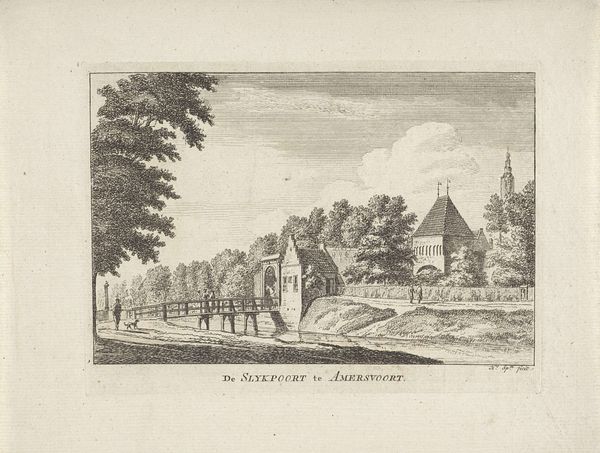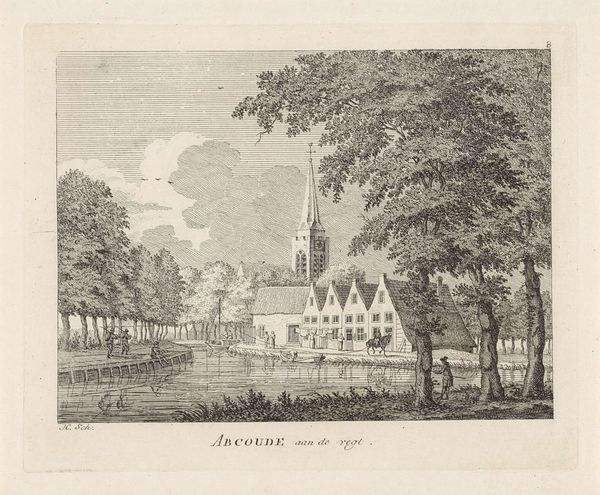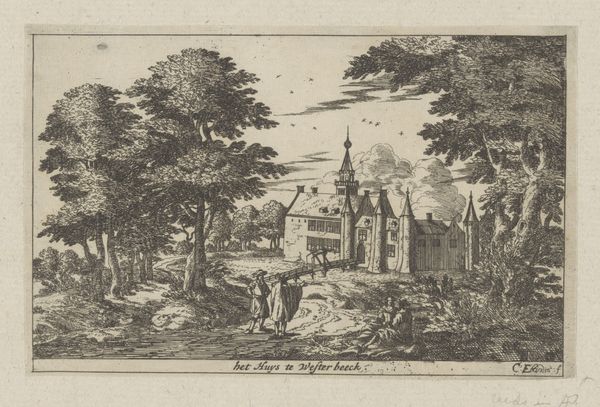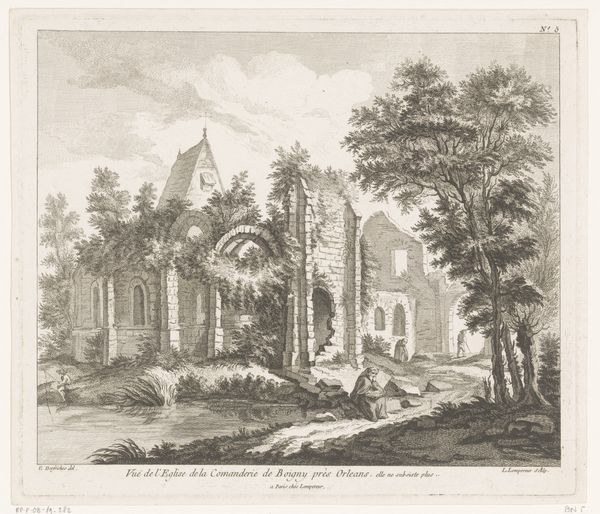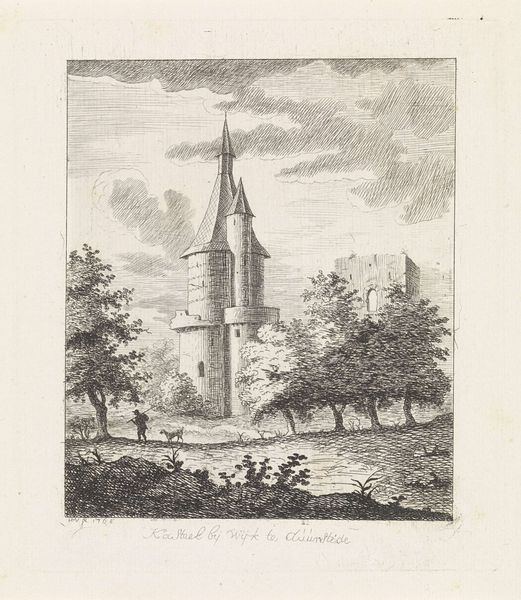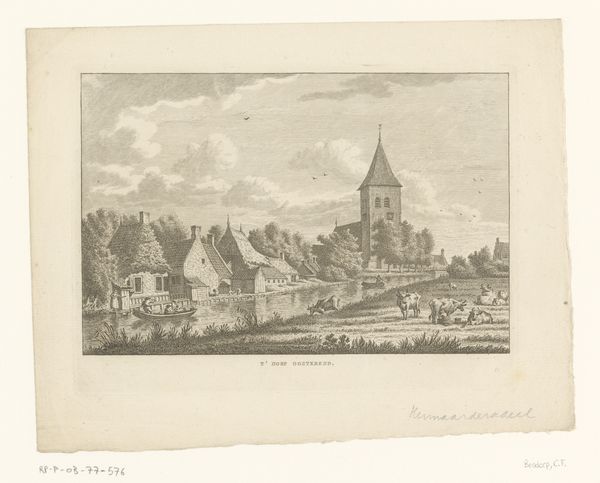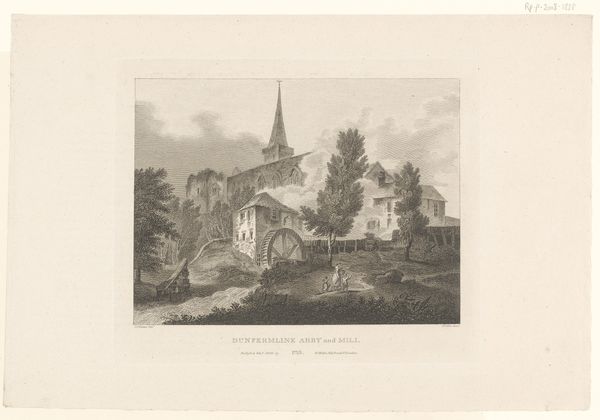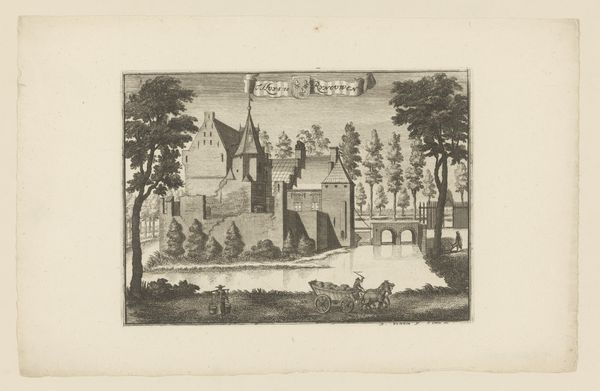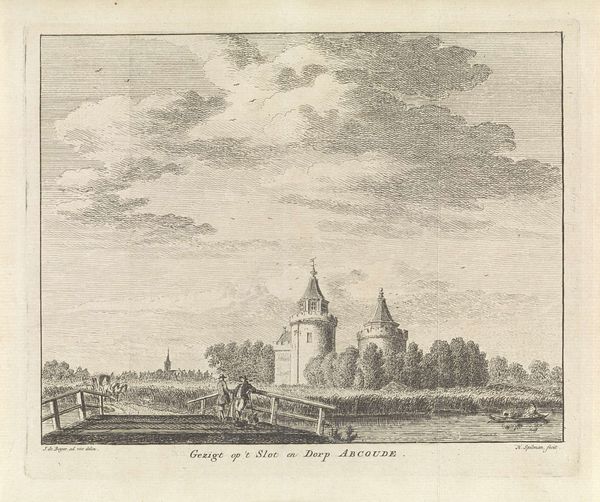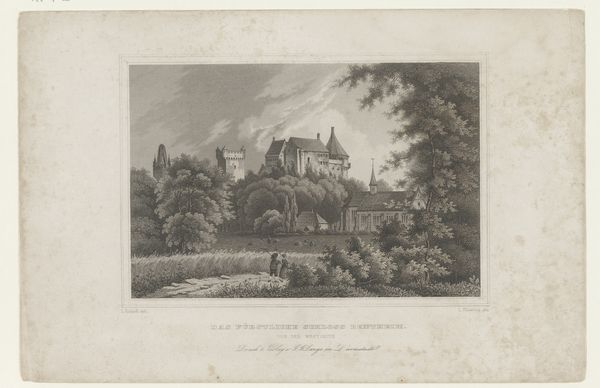
print, engraving
#
dutch-golden-age
# print
#
landscape
#
cityscape
#
engraving
#
realism
Dimensions: height 160 mm, width 200 mm
Copyright: Rijks Museum: Open Domain
Hermanus Petrus Schouten created this print of Ouderkerk aan de Amstel sometime in the late 18th or early 19th century, using a technique called etching. Etching involves coating a metal plate with a waxy, acid-resistant substance, then scratching an image into that coating. When the plate is dipped in acid, the exposed lines are eaten away, creating grooves that will hold ink. The entire plate is then inked, the surface wiped clean, and the print is made. The amazing thing about etching is how well it can capture detail. Schouten uses it to bring us the architecture, the trees, the townspeople. Look at the way the figures are enjoying the landscape. This wasn't just a fine art pursuit. Prints like this were very popular at the time, consumed by the rising middle class. They were a way of picturing the world, not just for the wealthy, but for a broader public. Etching connected art directly to the culture of its time. It wasn’t just about the image, but about the process of making it, and how that process played into a larger story of labor and consumption.
Comments
No comments
Be the first to comment and join the conversation on the ultimate creative platform.
